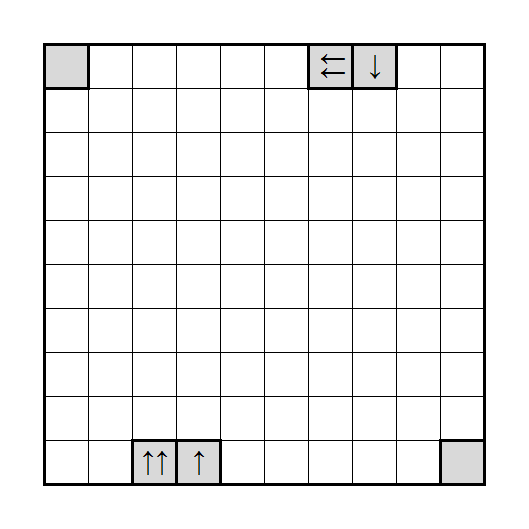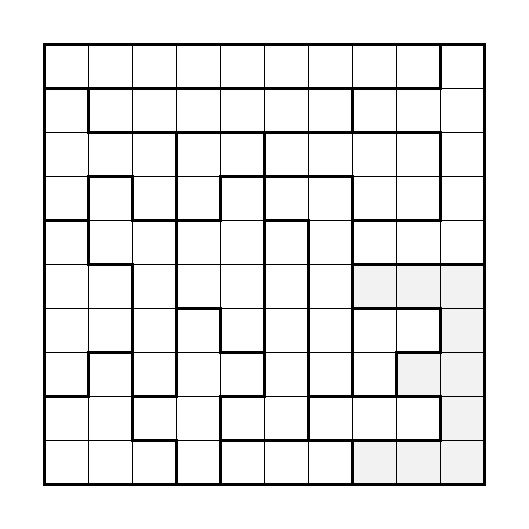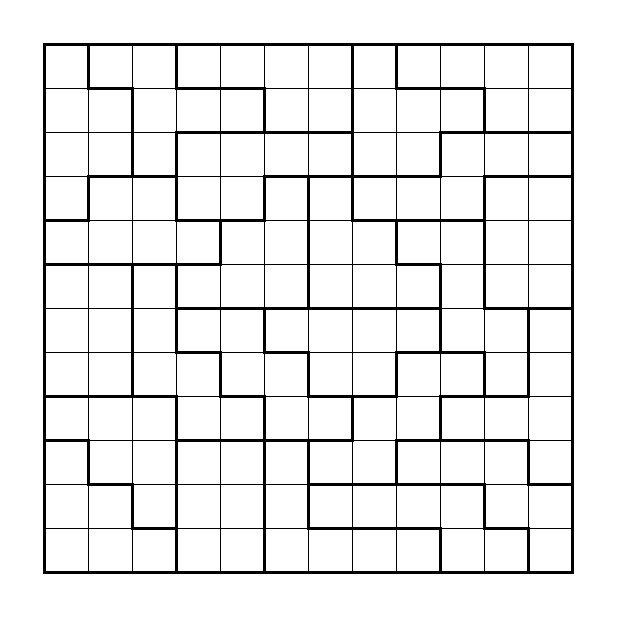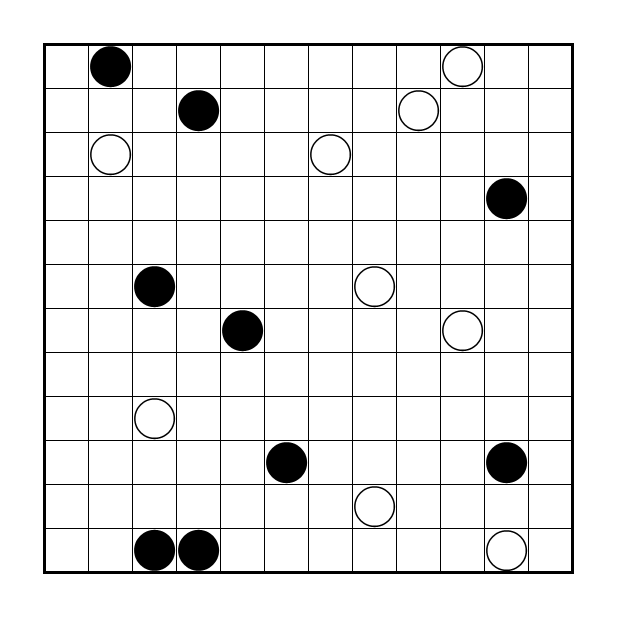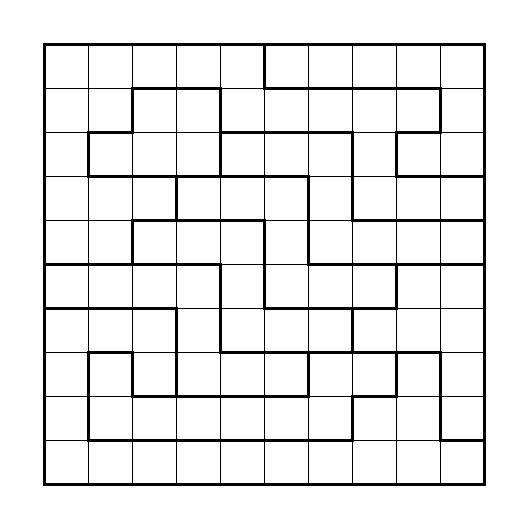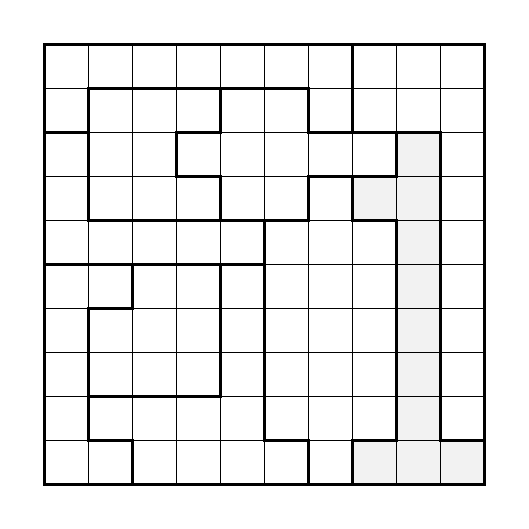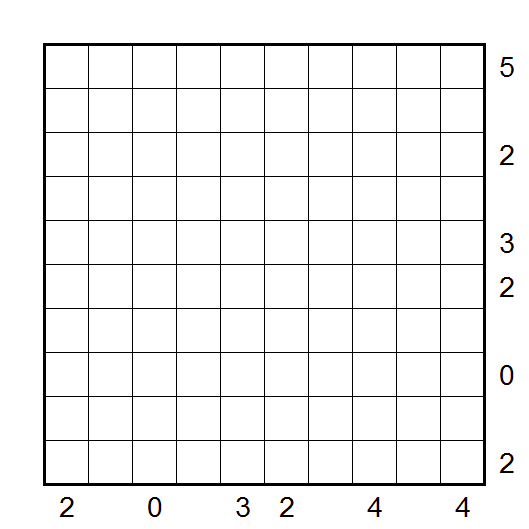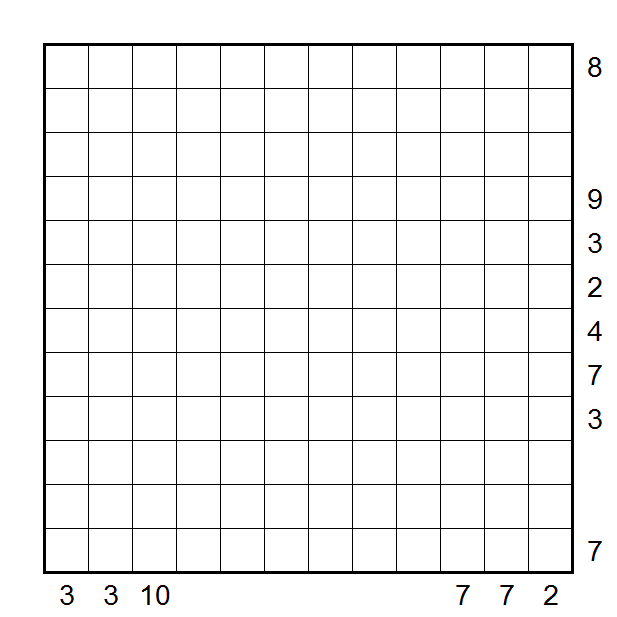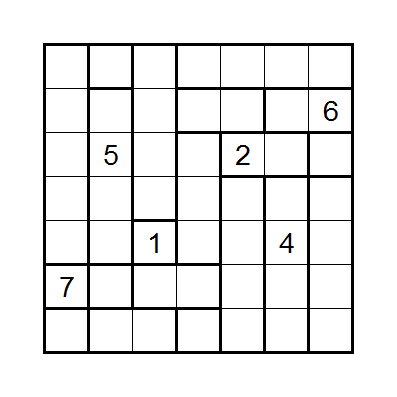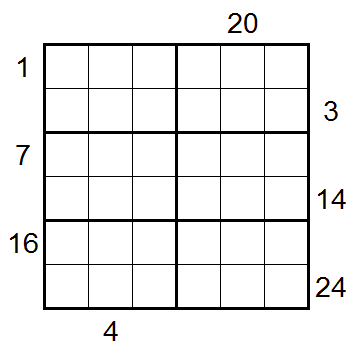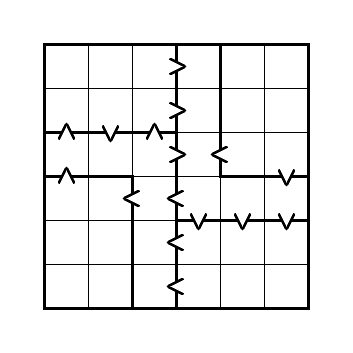Treasure Field
A friend came up with the rules, and I made this.
Rules:
- Place a treasure chest in every row and column. Two chests may not share an edge, but they may touch by corners.
- A clue with an arrow points to the direction of the nearest chest . Two arrows mean there are two chests equidistant to the clue in the directions the two arrows point to.
- The distance metric used is Manhattan distance.
- Additionally, the clues are unambiguous: from the clue’s perspective, the nearest chest can’t lie on a diagonal (or the clue itself).
To help clarify the rules, here’s the solution to the puzzle my friend made, with the clue arrows colour-coded according to which chest they hint at.
The shaded arrowless cells in the corners are empty, i.e. don’t contain treasure.
